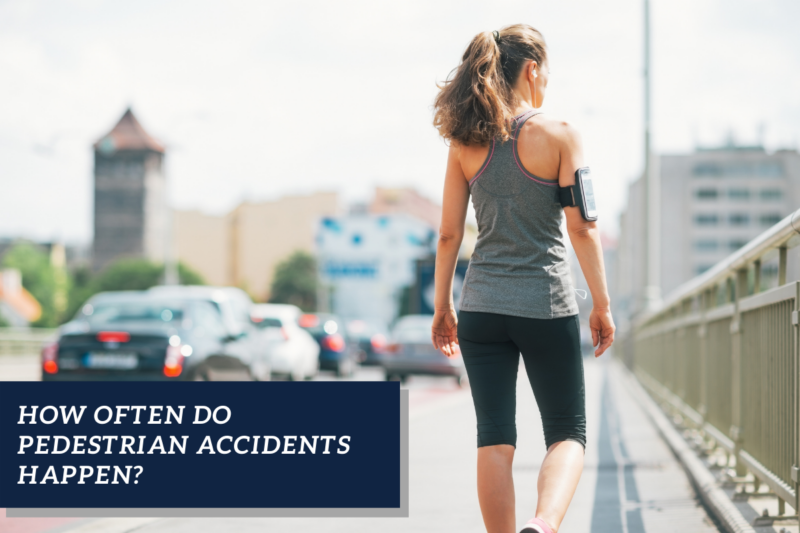
According to the Centers for Disease Control (CDC), 5,977 pedestrians died in traffic-related accidents in 2017, or one pedestrian fatality every 88 minutes. Pedestrian accidents tend to be more severe and more fatal than other traffic-related accidents because pedestrians have no protection from the force of a collision. Safety features, including airbags, seat belts, and the physical framework of their vehicle, are designed to protect occupants. Pedestrians have nothing to protect them in the event of a collision, so they are often the ones who suffer the most severe injuries.
If you are the victim of a pedestrian accident in Gwinnett County, you may be entitled to recover compensation to help you cover the cost of expenses related to the accident, including medical bills, lost wages, pain and suffering, and other losses. At Brauns Law Accident Injury Lawyers, P.C., we have the knowledge and resources to help our clients pursue the compensation they need to recover after devastating pedestrian accidents.
Common Causes of Pedestrian Accidents
Pedestrian accidents are among the most serious types of traffic-related accidents. Every accident is unique, but some of the most common causes of pedestrian traffic-related accidents include:
Distracted driving
Distracted driving is one of the most common causes of all traffic-related accidents in the United States. The CDC has broken down driving distractions into three categories:
- Visual – when a driver takes their eyes off the road.
- Manual – when a driver takes their hands off the wheel.
- Cognitive – when a driver takes their mind/focus off the task of driving.
Some of the most common driving distractions include:
- Texting
- Talking on the phone
- Using a GPS while driving
- Holding a pet
- Eating and drinking
- Taking photos and videos
- Playing games
- Adjusting the radio
- Talking to other passengers
- Daydreaming
Distractions can also come from outside the vehicle, such as when drivers take their eyes off the road to look at a billboard or a construction site. Distractions may cause drivers not to notice pedestrians walking near roadways or crossing at intersections, which can lead to terrible pedestrian accidents.
Speeding
When drivers ignore the speed limit, they typically have less time to react to road obstructions or stopped traffic due to their increased speed. Speeding also increases the likelihood that a motorist may lose control of their vehicle. This can spell disaster for pedestrians, particularly in zones with heavy foot traffic, such as city streets and school zones. Drivers who speed are also more likely to engage in other aggressive or reckless driving behaviors, such as tailgating, unsafe lane changes, failure to stop, and failure to yield the right-of-way.
Drunk driving
Driving while drunk or intoxicated can cause impaired judgment and a reduced ability to concentrate. It can also cause a delayed reaction time when road obstructions pop up. Motorists who drive drunk may fail to see pedestrians in time before causing a collision, especially in low light conditions. This can have deadly consequences for pedestrians.
Failure to stop or yield the right-of-way
When drivers fail to stop or yield the right-of-way, they can put pedestrians in grave danger. Failing to stop can include rolling through stop signs and ignoring or trying to beat traffic signals, which can cause collisions with pedestrians who are crossing at intersections. Failing to yield the right-of-way to pedestrians using crosswalks or crossing roadways can also have devastating results for walkers.
Backing-up accidents
Motorists may cause pedestrian accidents when backing out of a driveway or a parking spot. Frequently, drivers are so focused on scanning for other vehicles that they may miss pedestrians entirely, particularly if they are not properly checking their blind spots. This can cause terrible pedestrian accidents.
Hazardous conditions
Inclement weather conditions including fog, mist, rain, snow, sleet, smoke, and ice can also lead to pedestrian accidents, particularly if drivers have not adjusted their speed to account for the hazardous road conditions. Drivers who speed or otherwise drive recklessly in hazardous weather conditions are more likely to lose control of their vehicle and cause tragic pedestrian accidents.
Common Injuries Caused By Pedestrian Accidents
Motorists have the metal framework of a passenger vehicle – along with all of the modern safety features that passenger vehicles offer – to shield them from harm in the event of a collision. Pedestrians don’t have any of that. They have no protection from collisions with moving vehicles, and that makes them especially vulnerable to severe and even fatal injuries.
Some of the most common injuries sustained by pedestrians in traffic-related accidents include:
- Traumatic brain injuries – Traumatic brain injuries, also known as TBIs, can range from minor concussions, which typically require overnight monitoring, to life-threatening subdural hematomas, which require emergency medical care. TBIs are often caused by a violent blow to the head and can cause skull fractures, brain bleeding, and other acute injuries that may require surgery to repair. TBIs can also negatively affect mental health, impacting personality, emotions, logic, reasoning, and memory.
- Internal injuries – Blunt force trauma may cause a pedestrian to sustain internal injuries to vital organs. Common internal injuries include a ruptured liver, spleen, diaphragm, ruptured kidneys, and punctured lungs, which broken ribs can cause. Internal injuries are life-threatening, though they may not always show themselves directly after an accident.
- Spinal cord damage – Damage to the spinal cord can be life-altering. The spinal cord delivers important messages from the brain and distributes them throughout the rest of the central nervous system. If the spine is broken or transected, those nerves are effectively cut off from the brain. This can lead to paralysis, which is often permanent. If the spinal cord is transected in the lower back area, paralysis can occur in the lower extremities. If the spinal cord is transected in the neck or upper back area, paralysis can occur in all four limbs.
- Back injuries – Back injuries including strains, sprains, ruptured or herniated discs, pinched nerves, and fractured vertebrae can greatly affect mobility and result in chronic pain. Back injuries commonly occur when pedestrians are impacted by moving passenger vehicles.
- Whiplash – Whiplash is a type of soft-tissue injury that occurs when ligaments, tendons, and muscles in the shoulders, upper back, and neck are torn. This can occur when the head and neck jerk violently back and forth during a collision. Whiplash doesn’t always reveal itself immediately, and symptoms of delayed whiplash may pop up in the weeks and months after an accident occurs. If left untreated, whiplash can lead to loss of mobility in the neck and shoulders, as well as chronic pain issues.
- Broken/fractured bones – Broken and fractured bones are extremely common injuries in pedestrian traffic-related accidents due to the fact that pedestrians are usually directly impacted by passenger vehicles. Broken and fractured bones may require extensive surgeries to repair, as well as long recovery periods spanning months.
- Loss of limbs – Traumatic amputation accidents sometimes occur in pedestrian traffic-related accidents. Traumatic amputations can occur if a limb or digit is severed during the course of a collision, but they can also be medically required if a collision causes irreparable damage to a pedestrian’s limb or limbs.
- Burns, lacerations, and “road rash” – Burns can occur when pedestrians are exposed to toxic chemicals, fuel, or fire. Burns can result in painful scars that last a lifetime, causing permanent disfigurement. Lacerations, cuts, and scrapes can occur due to flying debris, and road rash can occur if a pedestrian is thrown across a roadway during a collision.
Compensation for a Pedestrian Accident
If you have been injured in a pedestrian accident, you could be entitled to collect compensation to help cover costs related to the accident. Compensation is designed to cover expenses such as:
- Medical bills
- Physical therapy
- Lost earnings, if you are unable to work after the accident
- Pain and suffering, including emotional trauma and mental anguish
- Loss of enjoyment of life
- Punitive damages, if appropriate
Navigating the complex process of claiming the compensation you are owed is challenging, particularly if you are trying to recover from serious injuries. At Brauns Law Accident Injury Lawyers, P.C., we take the burden off your shoulders by investigating the accident on your behalf, collecting and preserving valuable evidence to support your case, identifying the at-fault party or parties, calculating the value of your financial losses, and aggressively pursuing the compensation you deserve.
Contact Our Pedestrian Accident Lawyers
If you have been injured in a pedestrian accident caused by another motorist’s negligence in Gwinnett County, don’t hesitate to reach out to the Duluth pedestrian lawyers at Brauns Law Accident Injury Lawyers, P.C. today. We fight tirelessly for your right to collect the compensation you need to recover financially. Contact us today for a free consultation.














